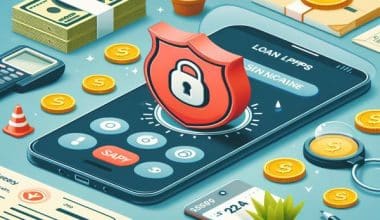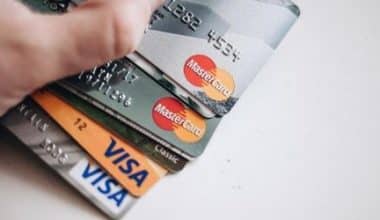Payment disputes are an unavoidable byproduct of the digital economy. As seamless, card-not-present purchases replace in-person, manual transactions, the need to appropriately arbitrate conflicts between businesses and consumers is more crucial than ever. What are chargebacks, and what should retailers know to prevent and combat them as effectively as possible? We’ll look at how chargebacks function, where they come from, and how they’ve evolved over time in this post. We’ll also look at some of the ramifications of chargeback abuse.
What is a Chargeback?
A chargeback is a debit or credit card transaction that the cardholder’s bank reverses after the cardholder disputes a charge on their account. Payment disputes are another term for chargebacks.
The definition of the term chargeback is easy. The bank will charge back to the merchant the amount of the disputed transaction, returning the money to the cardholder without the business’s agreement.
When a cardholder rejects a charge, banks normally evaluate the transaction. If the basis for the dispute is valid, they credit the customer’s account provisionally while the chargeback claim is handled.
Credit card chargebacks were initially adopted under the 1974 Fair Credit Billing Act ( 161. Correction of billing errors), a Truth in Lending Act modification.
The Electronic Fund Transfer Act of 1978 later mandated debit card chargebacks. These legislation were meant to establish consumer protection measures.
Chargebacks were a direct response to massive fraud by fraudsters who could exploit and misuse stolen credit information with no recourse for the consumer.
The chargeback method allows consumers to receive reimbursements from their banks while also allowing banks (rather than cardholders and merchants) to make judgments about how to handle the matter. While the process was not then known as a chargeback, it would establish the cornerstone for the modern dispute system.
What is the Chargeback Process?
The chargeback procedure can be a lengthy multistep back-and-forth between numerous entities trying to figure out who should pay for the transaction. This is how the process usually goes:
#1. A transaction clears your balance.
You object to the charge because you suspect it is fraudulent, there is a billing problem, or the merchant has failed to respond to your complaint about the quality of a product or service. When you suspect a billing issue or fraudulent transaction, you have at least 60 days to file a dispute, and you have up to 120 days if you have a complaint about a product or service you received.
#2. You submit a chargeback claim to your credit card company.
You can usually dispute a transaction by calling, emailing, or filling out an online form with your card issuer. When filing a dispute, you may be required to give your card issuer supporting documentation such as copies of a receipt, invoice, contract, and any correspondence you had with the merchant.
#3. The chargeback procedure is initiated.
The card company may reverse the charge or hold you liable for the payment. Otherwise, the dispute resolution process will continue. While the investigation is ongoing, you may receive a temporary credit on your account. If the inquiry concludes that you are not responsible for the purchase, the credit will become permanent, and you will no longer be concerned about the transaction.
#4. The process may involve multiple parties.
In addition to the merchant and credit card issuer, the probe could include the following organizations:
- The acquiring bank: a financial institution that permits merchants to accept cards, processes card transactions, and facilitates the transfer of funds from the cardholder’s account to the merchant’s account.
- The payment network: Credit card payment networks are created and managed by companies such as Visa and Mastercard. They are also in charge of determining the chargeback rules for their respective networks.
- You will be notified of the outcome: Your card company is required to finish its dispute inquiry within two billing cycles, which can take up to 90 days. At the end, you will either be deemed liable for the transaction or the amount will be permanently credited to your account.
According to Shopify, consumers have an 88% success rate with chargebacks. However, a chargeback is not always resolved in your favor. Merchants have the right to contest your claim, and you may still be required to pay for the transaction plus interest.
You should also not dispute a transaction simply because you do not want to pay; this is fraud. The merchant may file a civil case to recoup its damages, as well as a police report, which could result in criminal charges. You can check out this post on Chargebacks911.
Who Do You Ask for a Chargeback?
Chargebacks should be utilized sparingly and only when necessary. Consider using a chargeback in the following situations:
- If you suspect fraud: If you think that someone is using your card or account number without your permission, contact your card issuer or bank to dispute the charge. You might want to take additional precautions to safeguard your finances, such as putting fraud alerts to your credit reports or enrolling in identity theft protection.
- If you have a problem with a merchant: If you are having problems with an order, refund, product, or service, first contact the merchant directly. If the merchant refuses to assist you and does not adhere to its own return policy or quality guarantee, you can dispute the charge and request a chargeback.
However, you should not challenge a charge because you changed your mind, were dissatisfied, or the business clearly said that it does not accept returns. After being wronged, a chargeback can help you get your money back, but in other situations, you may have to live with buyer’s remorse instead.
Who Pays a Chargeback?
If the issuing bank initiates a chargeback, the issuing bank supports the chargeback through communication on their processing network. The merchant bank then receives the signal and authorizes the funds transfer with the merchant’s confirmation.
In rare situations, such as with fraudulent transactions, the issuing bank may issue a chargeback while also referring the claim to a collection department. In this instance, a bank assumes the liability and absorbs the expense through reserve funds while investigating and resolving the claim.
For chargeback transactions, merchant acquiring banks typically impose a fee on the merchant. A merchant account agreement specifies these fees. Fees are often charged each transaction to cover the processing network’s costs. Chargebacks may result in additional penalties.
Difference Between Chargeback and Refund
Chargebacks can appear to cardholders as traditional refunds. They aren’t, however. That’s the problem.
Most refunds require the cardholder to return whatever was purchased in order to receive their money back. That is not the case with chargebacks, in which the cardholder bypasses the merchant entirely and requests that the bank intercede.
When this happens, the merchant loses both the sale revenue and the value of the product. In addition, they lose the value of overhead costs like as shipping, fulfillment, and interchange. Finally, the business must pay a fee for each chargeback.
Debit Card Vs Credit Card Chargebacks
Credit and debit cards are frequently used interchangeably by consumers. While the two have many similarities, debit cards and credit cards provide varying levels of fraud protection.
The cardholder’s liability in situations of credit card fraud is restricted to $50. Because the funds technically belong to the bank rather than the cardholder, the bank may be more interested in recouping the monies.
Debit cards, on the other hand, are linked to funds that exist in the cardholder’s account rather than a line of credit given by the bank. Cardholder liability for debit card fraud is restricted to $500, if the event is reported within 60 days. Otherwise, their ability to recover monies is contingent on the bank’s decision.
Is There a Time Limit on When I Can Request a Chargeback?
The chargeback period, or the time limit for submitting a chargeback, depends on the payment processor, however it can range from 60 to 120 days. Chargebacks are permitted under the Fair Credit Billing Act within 60 days after the billing date.
What Is the Best Way to Combat a Chargeback?
When a client begins a chargeback, the merchant has a specific time frame in which to respond. This varies depending on the payment processor, but it is often approximately 30 days. The merchant can now offer signed receipts, contracts, and any other evidence proving that the chargeback was made in error.
Fees for Chargebacks
A merchant may be required to pay a chargeback fee in addition to losing the proceeds from a sale. This fee is levied by the payment processor to cover the administrative costs of resolving a chargeback. These fees typically vary from $15 to $50 per transaction, but they might reach $100 or higher depending on the payment processor. Chargeback costs are higher for businesses who are considered high risk due to their industry or chargeback history.
Some payment processors do not impose chargeback fees, while others will compensate them if the dispute is settled in favor of the business.
Chargebacks have additional repercussions.
Other effects of chargebacks can include monies being returned to customers and chargeback costs. The credit card networks establish acceptable monthly chargeback amounts for merchants. If a merchant breaches these network thresholds, they may be placed in a monitoring program and subject to monthly fines and other expenses.
In addition, if a merchant has a high number of chargebacks, they may be labeled as high risk and subject to increased payment processing fees or be required to have a reserve of funds to address chargebacks.
Reasons For Chargebacks
It’s critical to understand why customers initiate chargebacks, as well as what you can do to prevent and challenge them. Chargebacks are classified into two types:
#1. Use of the chargeback process that is legal
Consumers can use the chargeback process to dispute transactions on their credit card statements by going via their bank rather than the retailer. Customers generally have 60 days from the receipt of their bill to notify their credit card company that they are disputing a transaction. Valid credit card disputes with retailers typically fall into three categories:
- Transactions that are not authorized: These are fraudulent transactions that can occur as a result of the loss or theft of a cardholder’s physical card or the unauthorized use of their card information.
- Errors in billing: These may include inaccurate purchase dates and quantities, failure to credit returns, charges for goods that were not accepted by the consumer, and charges for things that were not delivered as agreed.
- Unresolved customer complaints: If a consumer is dissatisfied with a merchant’s response to a quality or other problem, they may dispute the charge.
#2. Misapplication of the chargeback procedure
In some cases, a consumer may request a chargeback for reasons that aren’t strictly valid. Incorrect utilization of the chargeback procedure, whether accidental or intentional, is referred to as “friendly fraud.” Here are some examples of consumer chargeback abuse:
- Getting around the return process: If a consumer believes that the return process is too complicated, they do not understand it, or the time restriction for the return has passed, they may choose to use the chargeback process instead.
- Failure to recognize the transaction: A customer may forget they made the purchase or fail to recognize the business name on their statement, in which case they may file a dispute as an honest error.
- Claiming a valid purchase is fraud: Finally, a client may make a lawful purchase from a retailer and then dispute the transaction in order to avoid paying for it.
How to Prevent Chargebacks
There are strategies you may use to reduce the amount of chargebacks your company receives:
#1. Follow credit card acceptance best practices and rules.
Chargebacks can be reduced by adhering to credit card restrictions and keeping PCI-compliant. Here are some general best practices for reducing chargebacks:
- Use a trustworthy point-of-sale POS, system and payment gateway.
- EMV-compliant POS hardware should be used.
- To prevent liability for a payment dispute, do not allow a chip card to be swiped.
- For magnetic-stripe-only cards, a cardholder’s ID and signature are required.
- For debit card purchases, have the customer enter their PIN or sign a receipt.
- For online or phone purchases, require clients to submit the expiration date, type of card, and CVV code.
- Teach your personnel how to properly accept credit cards.
- Customers should be given receipts.
- Make use of your payment processor’s fraud protection techniques and technology.
#2. Create clear, visible business policies and prioritize customer service.
Develop clear and visible business policies, particularly those relating to shipping and refunds, to help prevent friendly fraud. Make it as simple as possible for customers to return items and discuss any complaints with you by doing the following:
- Provide tracking information for all orders and utilize a dependable shipping service with evidence of delivery.
- Your delivery timeline and policies should be listed on your website and included with order confirmations and receipts.
- Clearly display your return and refund procedures in your business and on your website.
- To avoid confusion, make your price clear and detail everything on receipts.
- If you have set up recurring payments for a subscription service, send a reminder to customers before processing the payment.
- Make sure your company name appears on credit card statements.
- Encourage customers to contact you with problems via phone, email, or live chat – and respond to customer concerns as soon as possible.
#3. Check out your payment processor.
Throughout the chargeback process, you’ll collaborate with your payment processor to combat fraudulent chargebacks. You should compare providers, thoroughly study the agreements they give, and talk to them about how they handle chargebacks, what their costs look like, and what technologies they have available to combat legal and friendly fraud.
How to Handle Chargebacks
No matter how diligent you are, it is certain that your company will encounter chargebacks at some point, thus it is critical to understand what to do when this happens.
If your business is alerted of a chargeback, you’ll want to assess whether the claim is real. If the charge appears to be a genuine use of the chargeback process based on your investigation and records, you should notify your payment processor. It will work with the cardholder’s issuing bank to return the funds. Hopefully, your payment processor will collaborate with you to conduct additional investigations and recommend steps you can take to avoid future instances of card fraud.
If you believe a chargeback is invalid, you should dispute it as quickly as possible because you may only have a few days to react. Work with your payment processor to provide proof to the issuing bank, such as invoices, receipts, shipment data, and other documents, for use in its decision-making. If you rectify the issue with your customer during the dispute procedure, they can contact their bank and request that the chargeback be cancelled.
Here are a few helpful hints:
- Maintain your organization. Maintain detailed and orderly transaction records; these can be critical in giving evidence to dispute chargebacks.
- Make contact with your payment provider. Understand your provider’s chargeback process and respond quickly when you receive notification of a disputed transaction.
- Cases of friendly fraud should be challenged. Don’t be scared to fight chargebacks that you believe are fraudulent. Failure to refute them may harm your bottom line: According to Chargebacks911’s 2022 Chargeback Field Report, merchants claimed that friendly fraud was responsible for an estimated 42% of their chargebacks.
Conclusion
When you know what chargebacks are, you can combat them more effectively, learn from them, and take preventative measures. Even if you hire a chargeback management service to handle them for you, knowing the facts regarding chargebacks can help you determine whether that firm is giving you a decent return on your investment.
- PAYPAL SELLER PROTECTION: Detailed Guide to the PayPal Seller Protection Policy
- 10+ WORST CREDIT CARD PROCESSING COMPANIES According to Reviews
- How To Make Credit Card Charge Dispute: Processes and Limits
- PROVISIONAL CREDIT EXPLAINED !!! Best 2023 Practices
- Best 10+ CREDIT CARD PROCESSING FOR SMALL BUSINESS NO MONTHLY FEE






